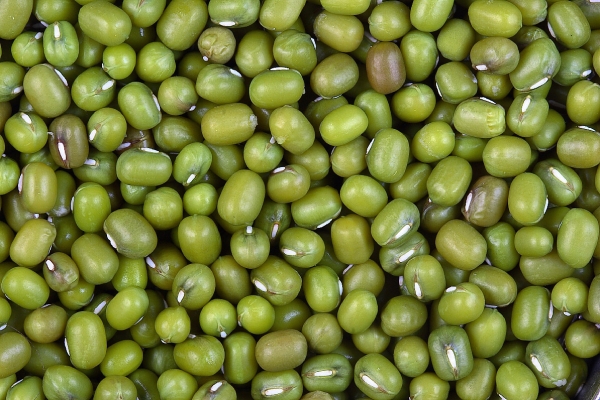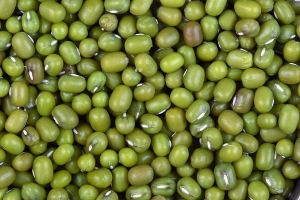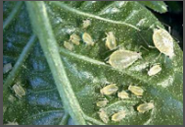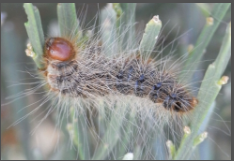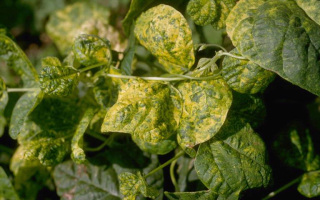Suketi-1 (DPM-8909):It is a high yielding variety which gets ready in single time. Therefore it’s harvesting is done in single time. It is suitable for Kharif season. The variety is resistant to yellow mosaic and is tolerant to leaf diseases.The variety gets mature in 85 days and gives an average yield of 4qtl/acre.
Shining Moong Number-1:It is an early maturing variety which gets prepare in 70-80days. It has thick and shiny grains. It is moderately resistant to diseases. It gives an average yield of 2.5qtl/acre.
Pusa Baisakhi:It is also an early maturing variety which gets mature in 65-70 days. It is suitable for sowing in summer and Kharif season. It gives an average yield of 2.5qtl/acre.
Other state varieties:
Marudhar (GNG 1958):Cultivated under irrigated areas also suitable for normal sown irrigated condition. It has brown seed colour. Ready to harvest in 145 days. Gives average yield of 8-10qtl/acre.
Triveni (GNG 1969):Cultivated under irrigated areas also suitable for normal sown irrigated condition. It possess creamy beige seed colour. Ready to harvest in 146 days. Gives average yield of 9qtl/acre.
Gangaur (GNG 1981):This variety is developed in 2008 for North West regions of India. This variety has green color grains. The weight of 100 seeds is 15-18gm. In Rajasthan this is the most liked variety. It has rich branches and sometimes 3 grains are also found in single pod. It gives an average yield of 10qtl/acre.
Sangam (GNG 1488):It is a late sown variety which is developed for Rajasthan area in 2007. The sowing of this variety is done in first week of December. It has brown and shining coat of seed. Grains are of medium size (15.8gm/100 grains). By late sowing the crops gets ready for harvesting in 130-135days. It gives an average yield of 7.5qtl/acre.
Gauri (GNG 1499): The variety is developed in 2007 for Rajasthan area. It has thick grains (29-30gm/100 grains) and has white color flowers. The crops get ready in 143 days and it gives an average yield of 7.5qtl/acre.
Vardan (GNG 663):It is an old variety of small grains which is brown in color. It gives an average yield of 8-10qtl/acre.
Samrat (GNG 469): Released in 1997 for North West regions. It has brown color grains (23-24gm/100 seeds).
GNG 1292: It has small shaped grains (22gm/100 seeds) which are released in 2002 for Rajasthan area.It gives an average yield of 10qtl/acre.
RSG 888:Desi variety. The variety is released in 2001 for Rajasthan and North West regions of India. It has medium sized grains. It gives an average yield of 8qtl/acre.
PBG 7: Recommended for cultivation in whole Punjab. This variety is moderately resistant to Ascochyta blight and resistant to wilt and dry root rot. Grain size is medium and gives average yield of 8qtl/acre. It gets mature in 159 days.
CSJ 515: Suitable under irrigated condition, seeds are small and are of brown colour weight 17gm/100 seed. It is moderately resistant to dry root rot, and tolerant to Ascochyta blight. Gets mature in 135 days and gives average yield of 7qtl/acre.
BG 1053: It is a Kabuli variety. It is early in flowering and matures in 155 days. Seeds are creamy white and bold in size. Gives Average yield of 8qtl/acre. Suitable for cultivation for throughout state under irrigated condition.
L 550: Kabuli variety. Semi spreading and early flowering variety. Matures in 160 days. Seeds are of creamy white color. It gives average yield of 6qtl/acre.
L 551: It is kabuli variety. It is resistant to wilt disease. Ready to harvest in 135-140 days. It gives average yield of 6-8qtl/acre.
GLK 28127: Suitable for cultivation under irrigated areas, seeds are of large size with light yellow or creamy colour with irregular owl head. Ready to harvest in 149 days. Gives average yield of 8qtl/acre.
GPF2: The plants are tall with erect growth habit. It is highly resistive to Ascochyta blight and will complex. It gets matures in about 165 days. Gives average yield of 7.6qtl/acre.
Aadhar (RSG-963): It is moderately resistant to Wilt, dry root rot, B.G.M and Collor rot, pod borer, & Nematodes. Ready to harvest in 125-130 days. Gives average yield of 6qtl/acre.
Anubhav (RSG 888): Suitable for cultivation in rainfed area. It is moderately resistant to wilt and root rot. Ready to harvest in 130-135days. Gives average yield of 9qtl/acre.
Pusa Chamatkar: Kabuli variety. It is tolerant to wilt. Ready to harvest in 140-150 days. It gives average yield of 7.5qtl/acre.
C 235: Ready to harvest in 145-150 days. It is tolerant to stem rot and blight disease. Grains are of medium and yellowish brown color. Gives average yield of 8.4-10qtl/acre.
G 24: Semi-spreading variety, suitable for rainfed conditions. Ready to harvest in 140-145 days. Gives average yield of 10-12qtl/acre.
G 130: Medium duration variety. Gives average yield of 8-12qtl/acre.
Pant G 114: Ready to harvest in 150 days. It is resistant to blight. It gives average yield of 12-14qtl/acre.
C 104: Kabuli gram varieties, Suitable for Punjab and Uttar Pradesh. Gives average yield of 6-8qtl/acre.
Pusa 209: Ready to harvest in 140-165 days. Gives average yield of 10-12qtl/acre.

